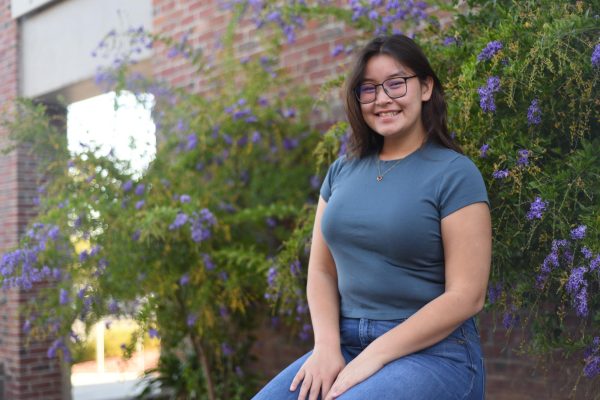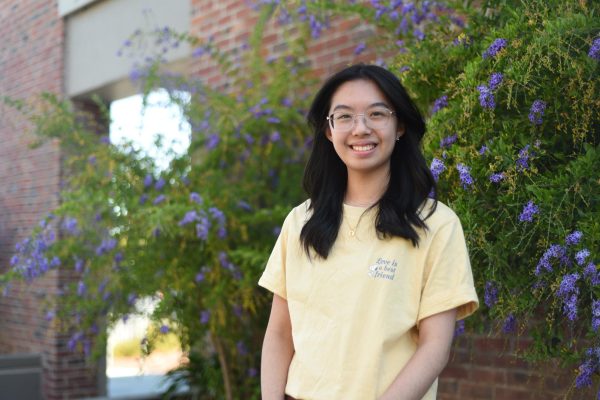As senior Royce Tse examined an athlete who’d just arrived at the athletic trainer’s office, he pulled from his growing experience as a student athletic trainer on campus to diagnose the athlete’s sore leg with a hamstring injury. Yet as he discussed his prediction with MVHS’ athletic trainer Myesha Taylor, she gently made fun of his confidence, explaining that the injured issue was in the I.T. Band rather than the hamstring. Tse says this experience was just the first of many learning moments.
“I like to try and assess things and see if I get it right to test my knowledge,” Tse said. “But I also love being wrong, because Taylor doesn’t try to make you look stupid at all, and corrects us in a way that helps us learn and in a very playful way.”
Tse is just one member of MVHS’ growing team of student athletic trainers. While the roles of student athletic trainers vary and are also dependent on the sport they are assisting for the season, they are generally required to be on the field or in the training office with athletes at least 2-3 times a week. Their role consists primarily of assisting Taylor with her everyday work. For instance, junior and student athletic trainer Keatin Lee says his daily responsibilities mainly consist of bringing water to different sports teams and helping wrap ice bags.
According to Taylor, student athletic trainers are additionally responsible for pre-game preparations and post-game clean-ups such as filling water in tanks and water bottles and preparing first aid kits. During games, they also have to keep an eye on the field in case of injuries or circumstances where they need to run on the field to assist Taylor. Taylor explains that she usually brings around a student trainer during games, demonstrating how she keeps athletes safe.
“For example, with football, I’ll have a student that’s my shadow for the first quarter, and so if I have to run out on the field, the student has to run out on the field too,” Taylor said. “If I have four students, it’ll be a different student each quarter that shadows me and the others help on the sidelines with cramping or any injuries that come.”
Taylor has also put immense effort into educating these student trainers alongside their normal responsibilities, sticking with the basics like taping different body parts to keep them more stable. Tse explains that the knowledge has taught him basic safety skills as a soccer player, learning to flex the athlete’s foot or open an athlete’s hand when taping to allow for better blood circulation.
Tse also expresses that his decision to join stems from his personal experience with Taylor, explaining how he had first noticed the trainer during MVHS soccer practices. From there, he explains that his curiosity has gotten him the role and the knowledge he has today.
“Being a soccer player myself and seeing the trainers out on the fields every time we’re playing, I feel bad when we get injured because it’s not easy for one person to carry them around or have to tape a bunch of people,” Tse said. “There’s usually five or six people asking for different things from Taylor at once, so I thought she could use a helping hand and I just wanted to learn what’s going on in the trainer’s office.
Lee echoes Tse’s experience, explaining that his motivation to join the team stemmed from his time with Taylor as she treated his injuries as a wrestler. Although it was initially the volunteer hours that piqued his interest, he explains that even the small things now gives him fulfillment in this role.
“Knowing that people are getting water now makes me happy because, in the past during my practices, when an athletic trainer wasn’t around, we would have to always bring our own water,” Lee says. “If we didn’t bring water that would just suck, because then we won’t have water the entire practice and it leads to cramping and injuries because of dehydration.”
Still, despite their time in the trainer’s office, Taylor acknowledges that there is still much more to learn in the field that the experience of being a student athletic trainer in high school doesn’t cover. However, she believes that this program is a good head start for students who want to learn more about professional athletic training, as she hopes “this little taste of the field will encourage them to keep going.”
Taylor is currently working with athletic director Nick Bonacorsi on forming an official program for student athletic trainers. She’s optimistic they will create a system that will properly train and reward students for their efforts. As of the 2024 fall sports season, students can receive elective credits or volunteer hours for their work in the trainer’s office. In the future, Taylor hopes to partner with school organizations like Sports Medicine Club to help establish her program and increase student interest.
“Athletic training is not a job for one; it’s a team job,” Taylor said. “I need students to help out, as there’s only one athletic trainer here. Many hands make light work, so it’s definitely a team effort.”









